May 06 2003
MSD without unmoved atoms
Unmoved atoms are defined as those never move farer than the given
cutoff distance from their original positions. In the following plots the
unmoved atoms are excluded from the averaging of MSD. The cutoffs of
3.8 and 6.1 have been used.
The movies of well-equilibrated system at different tempeatures
can be downloaded here.
They are further constant
temperature MD runs at each temperature for 4.3ns after the
equilibrating constant temperature MD runs for 21ns.
Number of moved atoms
The numbers on each layer are on the page of
Feb. 22,2003.
cutoff=3.8
| T |
Surface |
Layer 1 |
Layer 2 |
Layer 3 |
Layer 4 |
Bulk |
| 700K |
134 |
129 |
7 |
0 |
0 |
0 |
| 900K |
729 |
568 |
60 |
6 |
0 |
0 |
| 1000K |
871 |
591 |
229 |
90 |
18 |
38 |
cutoff=5.0
| T |
Surface |
Layer 1 |
Layer 2 |
Layer 3 |
Layer 4 |
Bulk |
| 700K |
74 |
65 |
6 |
0 |
0 |
0 |
| 900K |
640 |
525 |
45 |
2 |
0 |
0 |
| 1000K |
869 |
590 |
202 |
69 |
12 |
26 |
cutoff=6.1
| T |
Surface |
Layer 1 |
Layer 2 |
Layer 3 |
Layer 4 |
Bulk |
| 700K |
38 |
33 |
2 |
0 |
0 |
0 |
| 900K |
576 |
490 |
42 |
0 |
0 |
0 |
| 1000K |
867 |
590 |
184 |
52 |
10 |
14 |
cutoff=7.0
| T |
Surface |
Layer 1 |
Layer 2 |
Layer 3 |
Layer 4 |
Bulk |
| 700K |
17 |
14 |
0 |
0 |
0 |
0 |
| 900K |
524 |
452 |
41 |
0 |
0 |
0 |
| 1000K |
859 |
588 |
175 |
49 |
7 |
12 |
| cutoff=3.8 |
cutoff=5.0 |
cutoff=6.1 |
cutoff=7.0 |
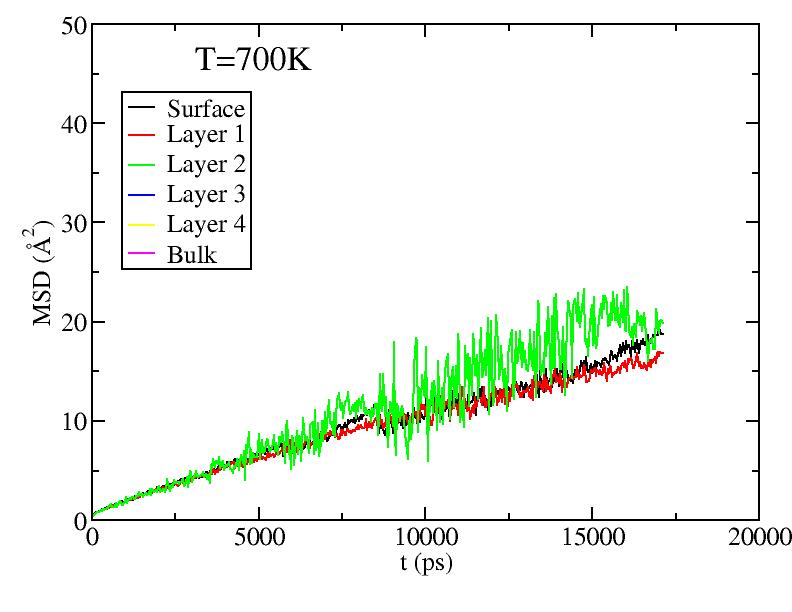 |
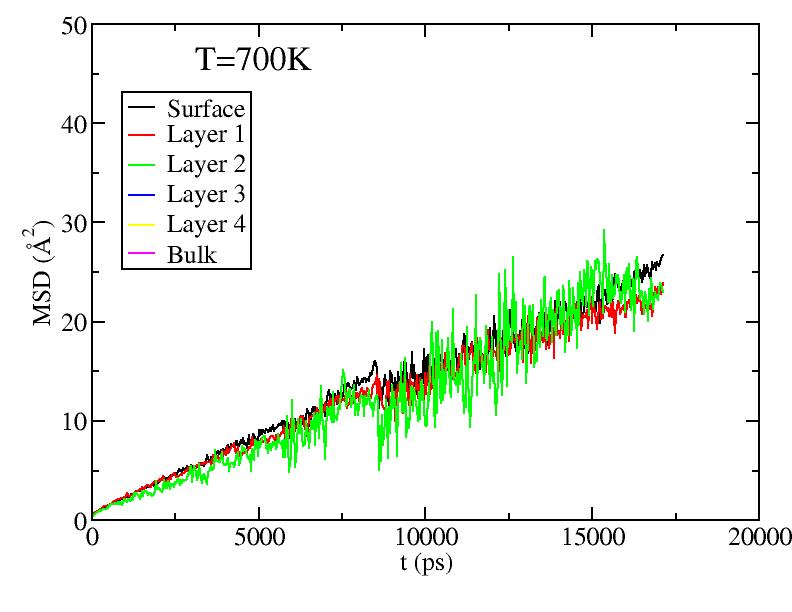 |
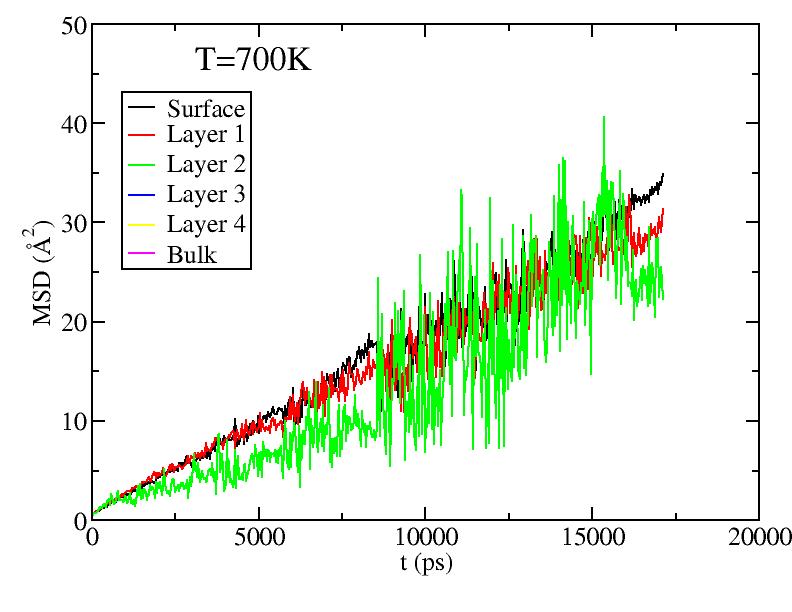 |
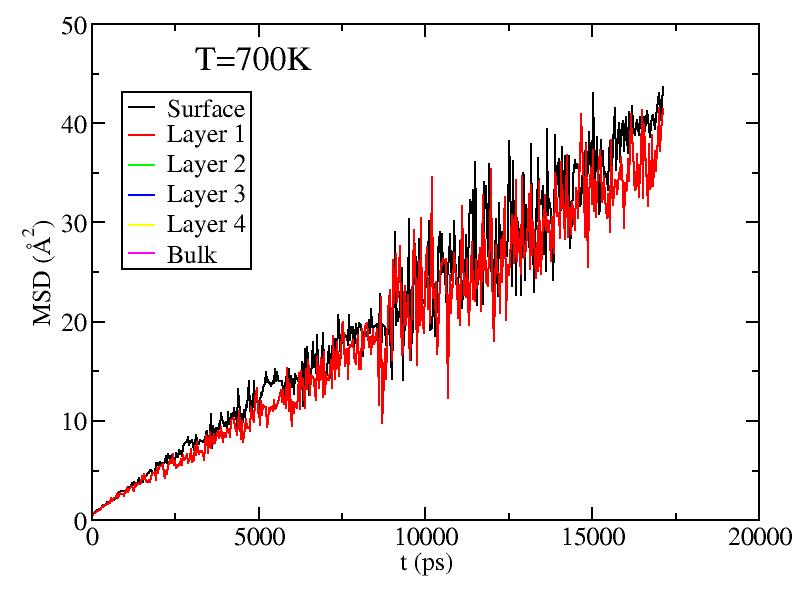 |
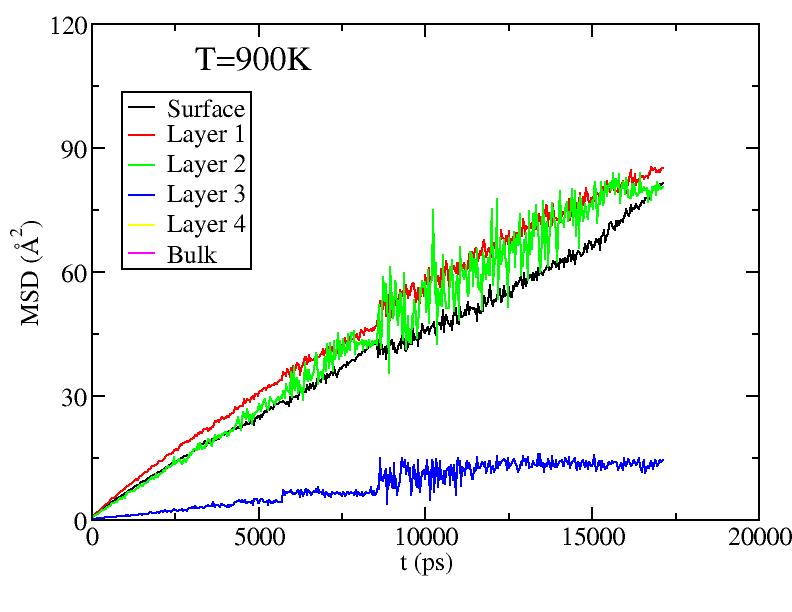 |
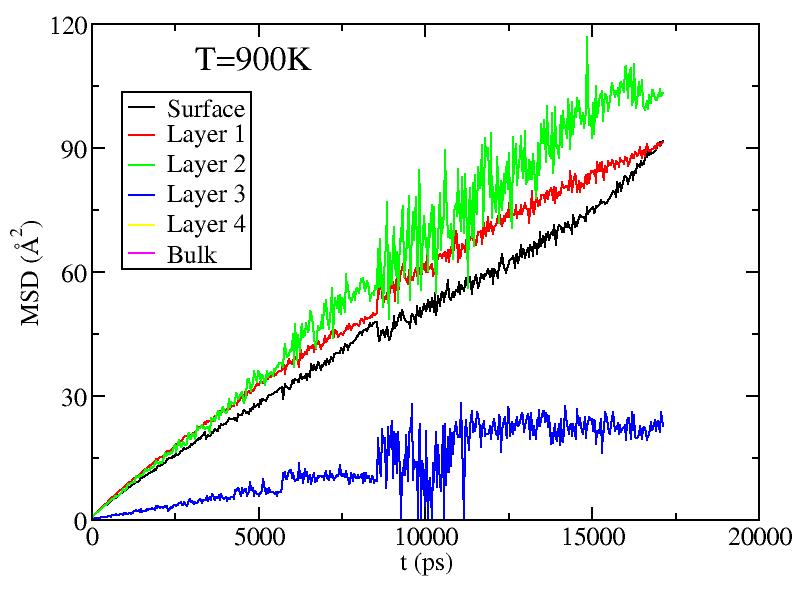 |
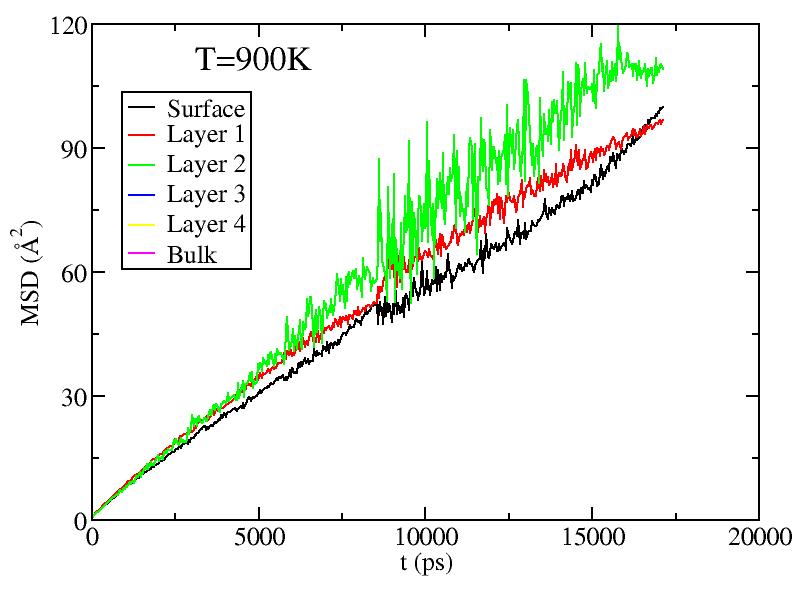 |
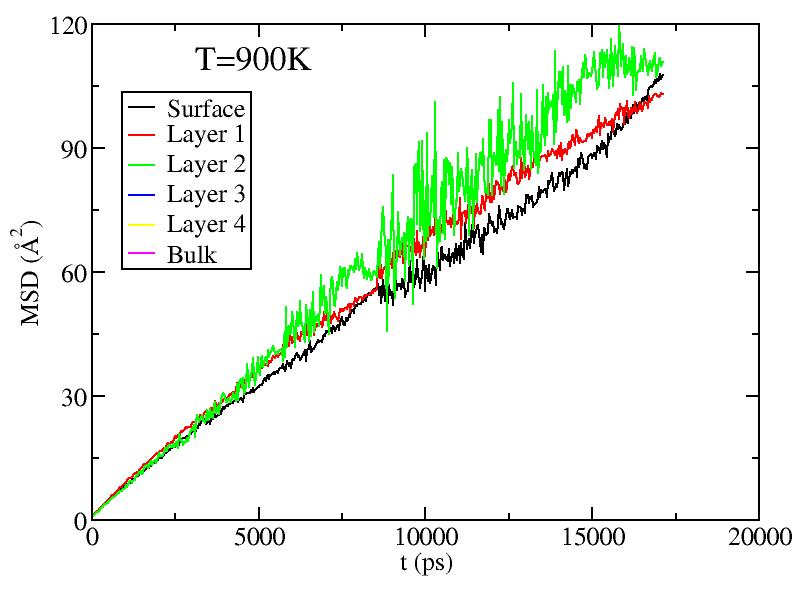 |
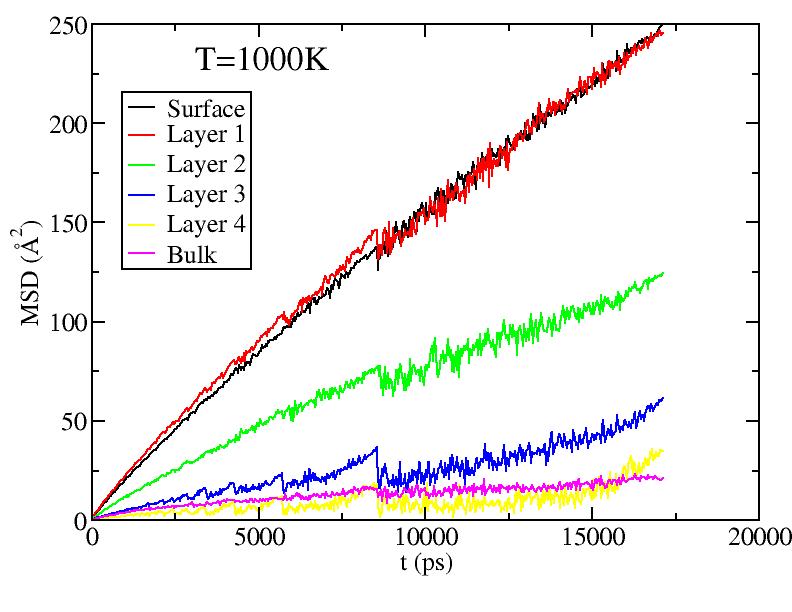 |
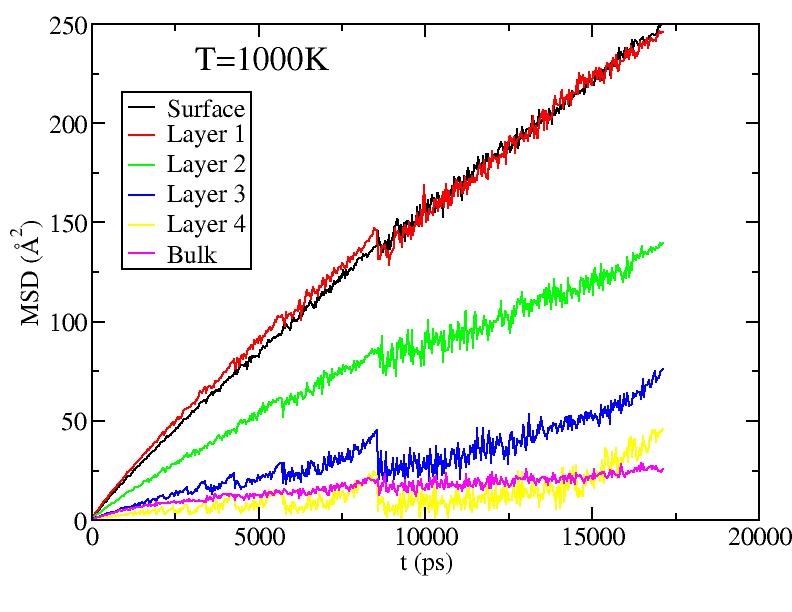 |
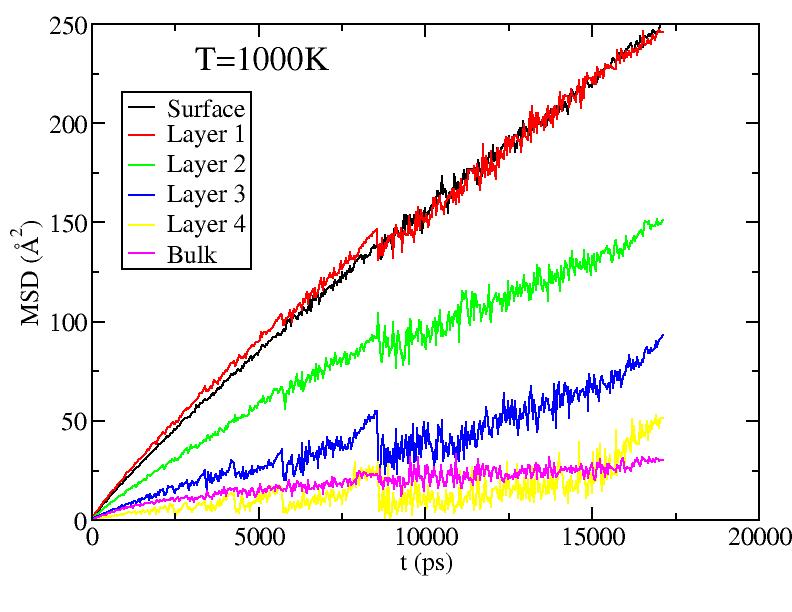 |
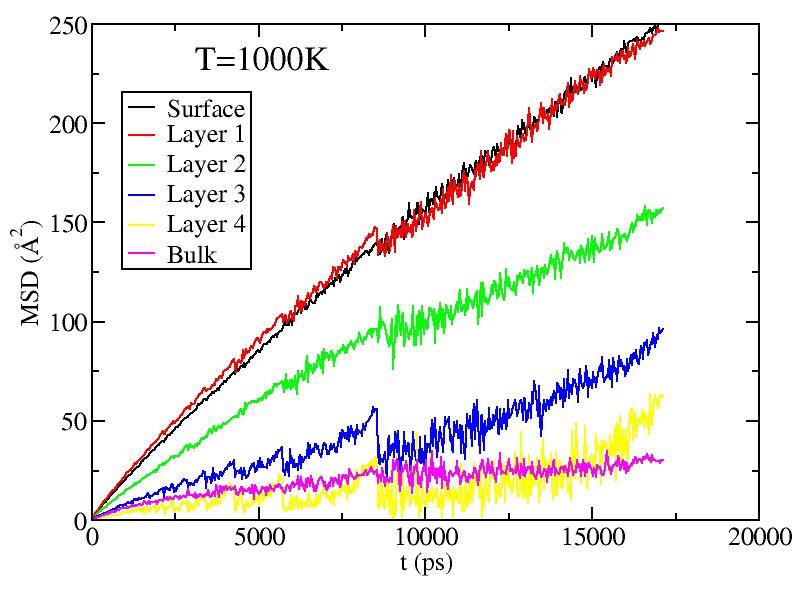 |
Movement of surface atoms
As to my understanding of the results we got, there are several kinds of
movement of surface atoms:
-
Thermal flucturations: Atoms vibrate around the lattice positions
with a very small amount which lead
the MSD curves don't approach the origin linearly (invisible for T>=900K
because of large scales of y-axis).
-
Macroscopic facet fluctuation: The facets move as a whole and change
the positions of vertices and edges where the facets meet. This can be seen
from the movies which can be download above.
This might partly
explain why the strucuture keeps unchanged when the atoms move a lot.
-
Hopping around: The atoms are free to travel within a certain
distance. In other words, the atoms are binded in a local
region larger than its own lattice. It is the case for vetex atoms at T=700K.
I am not sure if it still exists at higher temperature.
-
Diffusion: The atoms can really travel far away from its original
positions. However, the lattice structure may still be conserved because
the atoms may exchange their positions without continuous movement.
Accoring to the previous distribution
plots of number of atoms vs. MSD, at the
temperature as low as 600K, it was those very few atoms with large movement
which contribute a lot to the average MSD.























